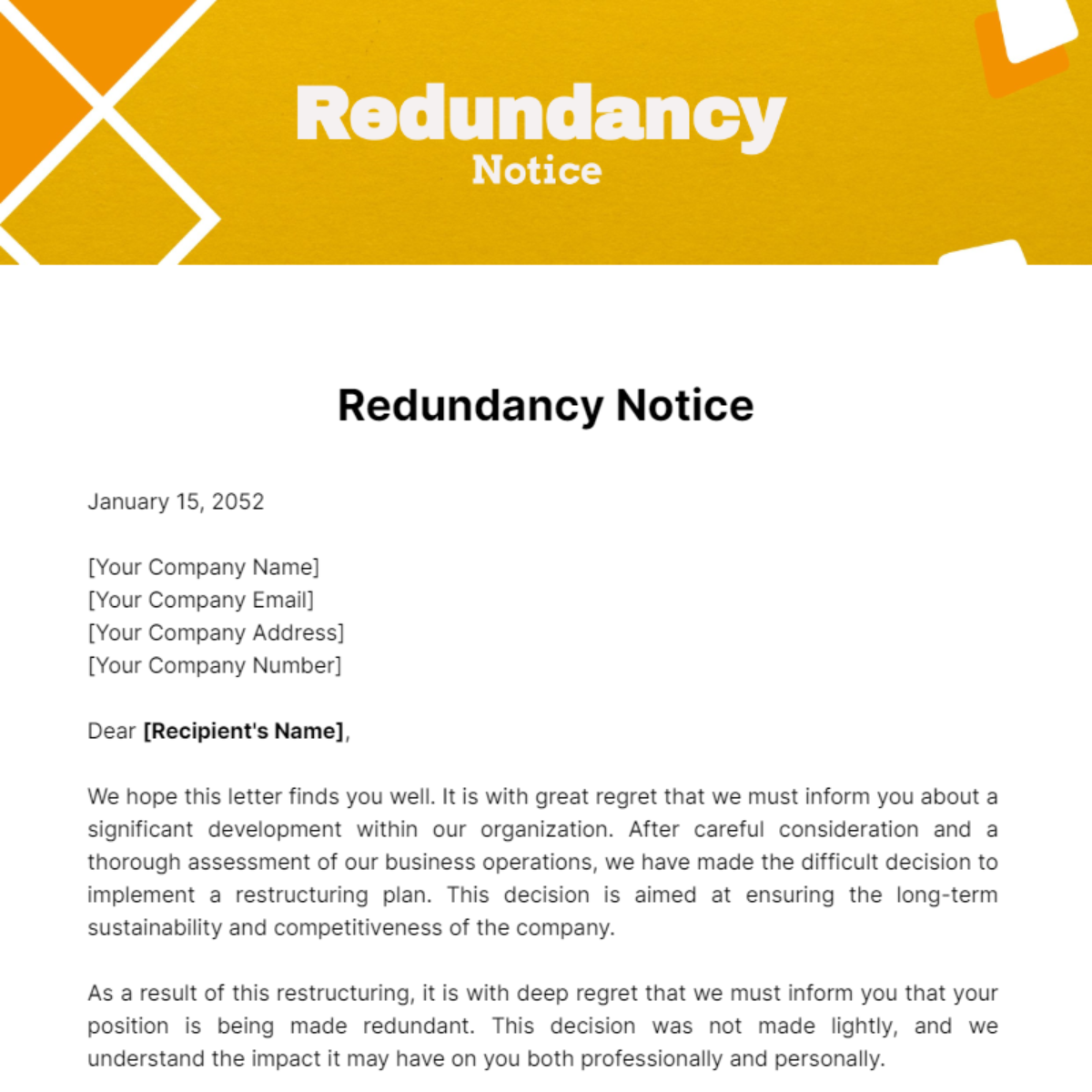Unloading the Approaches for Mitigating Company Redundancy and Enhancing Organizational Resilience
Mitigating business redundancy and improving organizational resilience have become focal factors for leaders aiming to prosper and adapt in an ever-evolving market. As we explore the multifaceted methods employed by forward-thinking companies, a much deeper understanding arises into the proactive steps important for cultivating dexterity and perseverance in the face of change.
Assessing Current Business Redundancies
To successfully assess existing organizational redundancies within a firm, a comprehensive review of the existing roles, procedures, and responsibilities is important. if a company goes bust who pays redundancy. By performing a thorough exam of the various functions and jobs performed within the company, administration can recognize areas where replication of initiatives or inefficiencies exist. This evaluation needs to not just focus on individual task duties but likewise consider how different departments connect and collaborate
One strategy to assessing redundancies is to assess job descriptions and tasks to determine any overlaps or voids in responsibilities. Furthermore, examining the operations and interaction networks can expose traffic jams or unneeded actions in procedures. It is essential to include workers whatsoever degrees throughout this examination to obtain understandings from those directly associated with daily operations.

Carrying Out Agile Workforce Strategies
Complying with a complete analysis of present business redundancies, the implementation of dexterous labor force approaches comes to be vital for maximizing functional effectiveness and flexibility. Dexterous labor force techniques include developing a dynamic and versatile workplace where workers can swiftly adjust to changing company demands. One essential element of applying agile workforce methods is promoting a society of continuous knowing and advancement. This entails giving employees with the necessary devices, resources, and training to get brand-new abilities and competencies. Additionally, companies can improve agility by promoting cross-functional teams that can quickly move and collaborate focus based upon top priority jobs.
One more important component of active labor force approaches is promoting clear interaction and empowering workers to make choices autonomously within their duties. On the whole, applying active labor force approaches can assist firms remain competitive in today's swiftly developing service landscape.
Leveraging Technology for Effectiveness
Leveraging innovative technological solutions can significantly improve functional performance within organizations seeking to enhance processes and enhance resource utilization. By incorporating automation devices, expert system, and data analytics, business can enhance operations, reduce hands-on errors, and make data-driven choices without delay. Automation can take care of here repetitive jobs, allowing employees to focus on more tactical efforts, consequently increasing efficiency and advancement.
In addition, the execution of cloud computer solutions makes it possible for seamless collaboration among team members, despite their physical area. This cultivates interaction, boosts task monitoring, and boosts total effectiveness. Additionally, using customer relationship management (CRM) software can help businesses much better recognize their consumers' demands, customize interactions, and ultimately increase consumer fulfillment and commitment.

Motivating Continual Knowing and Growth
Executing a society of continual discovering and development is vital for cultivating growth and versatility within a vibrant organizational setting. Motivating staff members to take part in ongoing discovering possibilities not only enhances their private abilities but likewise adds to the total resilience of the company. By focusing on continuous discovering, companies can remain abreast of sector trends, adapt to technological developments, and stay affordable in the market.
To efficiently motivate constant discovering and development, firms can develop learning and growth programs, supply opportunities for upskilling and reskilling, supply accessibility to on the internet courses and resources, and create an encouraging learning environment. Managers play a critical duty in promoting a society of learning by leading by instance, giving responses and mentoring, and identifying and compensating staff members' understanding success.
Structure a Durable Corporate Culture
Developing a durable business culture is paramount for companies looking for to flourish and browse obstacles in an ever-evolving service landscape. A durable corporate society is defined by adaptability, openness, open interaction, and a strong feeling of function. To build such a society, leaders Go Here should prioritize cultivating depend on amongst staff members, motivating collaboration, and advertising a growth frame of mind. Transparent interaction about business modifications, obstacles, and successes is important in creating a society where workers really feel notified and valued. In addition, supplying opportunities for expert development, identifying and awarding staff members' contributions, and advertising work-life balance are necessary elements of a durable corporate culture.
Leaders play a significant function in shaping the culture of a company. By leading by instance, demonstrating durability when faced with hardship, and proactively sustaining their groups, leaders can infuse these worths throughout the organization. A resilient business culture not only assists firms hold up against challenges but likewise promotes development, enhances employee involvement, and inevitably adds to long-lasting organizational success.
Conclusion
In conclusion, the strategies for reducing company redundancy and improving organizational strength are important for preserving competition in today's vibrant company setting. By evaluating present redundancies, applying dexterous labor force strategies, leveraging innovation, motivating continuous learning and growth, and developing a resilient company society, organizations can adjust to alter, improve performance, and foster advancement. These positive actions will aid business navigate obstacles, reduce disturbances, and make sure long-term success in the ever-evolving market.
Following a comprehensive analysis of present business redundancies, the application of dexterous workforce methods becomes essential for enhancing operational effectiveness and flexibility - if a company goes bust who pays redundancy. In general, applying nimble labor force methods can help business remain affordable in today's rapidly progressing business landscape
A durable business society not just helps business hold up against challenges however likewise fosters development, improves staff member engagement, and eventually adds to long-lasting business success.

Comments on “Clarified: If a Company Goes Bust Who Pays Redundancy in the UK?”